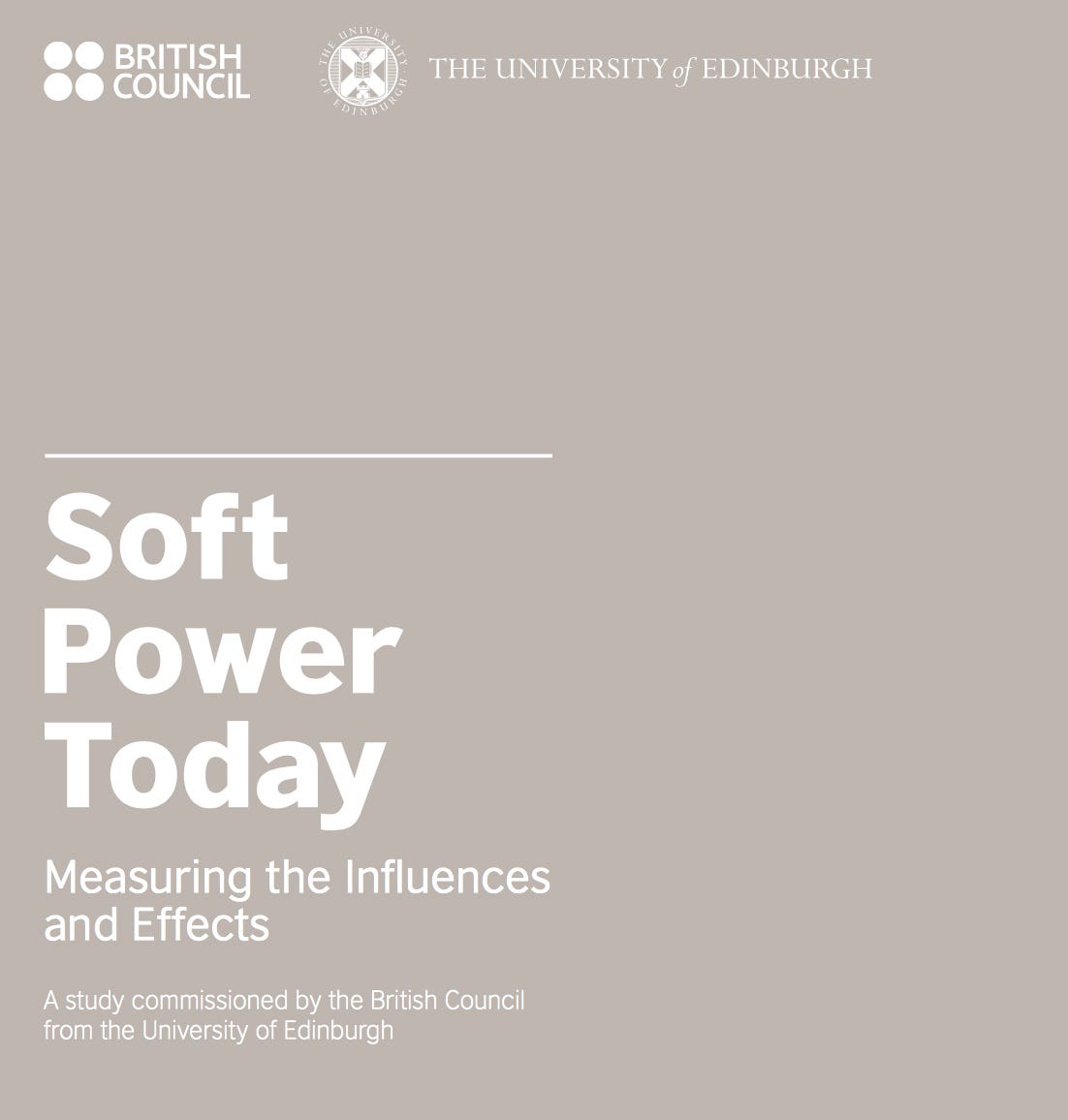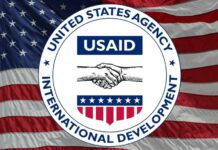Towards the end of 2016, in the still early days of the Brexit process, while I was still working at the Centre for Cultural Relations at the University of Edinburgh, I wrote the literature review for the report, published 2 weeks ago by the British Council called “Soft Power Today, Measuring the Influences and Effects”.
The literature review was a fairly traditional piece of work, which pulled together current thinking on the state of soft power in the world as it was at the end of last year. This blog post does not repeat what is in the report, but reflects on the process of writing it, makes a suggestion for clarifying what we talk about when we talk about soft power, and suggests that a global vision is needed to address the many challenges of today.
As with any literature review, it was possible to summarise what politicians, academics and practitioners thought was the significance of soft power, but it was not possible to go beyond that to make any claims as to what its (measurable) impact might be.
One immediate problem with assessing impact, is that the literature review (and the rest of the report) recognised that the term “soft power” is highly contested, and in many ways not very useful. Nevertheless, it remains the main term used in political and policy discourse, so the report used Joseph Nye’s view that it is the ability to get what you want through attraction rather than through coercion or payments.
Given these theoretical uncertainties, does soft power matter? The report found that it did — at least at the end of 2016. That already seems like a long time ago, an earlier age, given the constantly accelerating pace of events, the rise of populist nationalism, and growing challenge to multilateralism and “soft” policies that favour positive international engagement.
At that time, UK Ministers were lining up to stress the importance of the UK’s soft power to its global engagement post-Brexit. They were no doubt right to do so, but it is still not clear how this enthusiasm will manifest itself in practice, and how they plan to build an image of the post-EU UK as a good and reliable international partner.
The other perennial question in discussion of soft power, is, as mentioned already, definitional. What is soft power, exactly? What does it achieve? Is it better at achieving it than other methods? There are long-standing and fruitless debates about this. One answer though, is actually pretty simple (possibly simplistic) and is based on considering who does what, and who has agency.
States are responsible (and governments are accountable to Parliaments) for foreign policy, and for the choice of policies, institutions, contracted parties, and methods through which they choose to work. These include MFAs, diplomats, public diplomats, and cultural diplomats. This group includes both those to whom diplomatic law applies, and others acting in a foreign policy role of communicating with foreign publics. It also includes “arms-length” bodies which owe their existence and operational freedoms to states. Finally, it includes other non-state bodies that states and their institutions may contract with to carry out relevant functions from time to time. This is all in the domain of foreign policy (broadly defined to include economic relations, security, etc). “Soft power” in this sense is a domain of public policy and there is no prima facie reason why its success cannot be measured in the same way as that of any other area of foreign policy — did it achieve its objectives?
Then there is a far larger domain of international cultural relations which is enabled by policy, but not driven by it. The actors pursue their own goals, whether these are commercial, educational or cultural. These goals often require or demand international collaboration. That is certainly true in cultural industries, education and the arts. The institutions, organisations and even individuals involved have, and insist on, agency. There is a public policy dimension to this, in that these organisations act mainly within frameworks of domestic cultural or educational policy, or within commercial and regulatory frameworks. Without the necessary enabling and facilitating framework of domestic policy, it is hard for a country to be attractive to others, whatever is claimed on the international stage — words will not match deeds. “Success”, in this sense, can be measured in aggregate — eg how globally connected is country X,Y, or Z through its policy frameworks, institutions and practices?
If the above description is recognised as having some validity, there are two important questions: firstly, clarify what is the relationship between foreign policy and domestic policy, and secondly, what should the relationship be between those who are active in the international cultural relations space and those active in foreign policy? I am leaving (dodging) the first (enormous) question by postponing it to a future blog post.
The second, however, can be stated relatively easily, byy thinking about specific examples. How can, for example, a small arts organisation working in innovative ways across borders that policy finds it impossible to cross (because the policy is officially antagonistic) develop its activities in a way where the potential of culture to develop connections, reduce misunderstandings, and engage about values and ideas can actually be realised? Similar issues arise in the relations between states and commercial cultural actors. The impact in individual cases may be small, but the cumulative effect can be significant (almost a “nudge” approach).
Finally, there is the question of vision and leadership. In the world of today there are unprecedented challenges. There is a need for an updated vision of how the global conversation on the one hand, and transnational engagements can be understood and taken forward. It is hard to see how a “soft power” approach based as it is on a model of (very unequal) competition between states will prove any more effective in helping address global challenges than will traditional approaches. A new vision needs to be based on new ways of understanding how influence actually flows, an ability to make sense of both the digital and analogue worlds, and through leading the argument in favour of positive transnational engagement. That argument, to succeed, has to be strong, and based on evidence. There is a need for more and better analysis based on up to date techniques of big data analysis, developed for the common good rather than on the ened to promote national or commercial interests.
The rest of the report, led by Professor J.P. Singh, attempted to investigate the possibility of looking at the measurable impact of “soft power”, by proposing a “framework that measures the conditions under which a broad set of soft power influences translates into economic, political and cultural benefits”. To do this, Professor Singh conducted a “statistical study of soft power across political, cultural and economic dimensions”. It found that “many soft power assets or resources are statistically significant in explaining outcomes”. For example, the study found that “high levels of democracy and low levels of political rights restrictions attract international students and tourists, foreign direct investment and they moderate voting patterns at the United Nations”.
While this work is a step in the right direction, as noted above, further work is needed to build the evidence base, and develop the right analytical toolkits.














